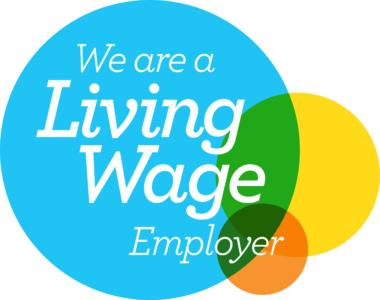Some readers may recall attending our Autumn Social Housing Webinar in October last year when we picked -through the then draft (if not you can catch-up via our YouTube channel).
Fast forward to 2021 and the government has recently published a new look Building Safety Bill. For context, this is 12 months after the first draft was published. And so what has changed?
Why is the Building Safety Bill needed and what will it do?
The Grenfell Tower tragedy brought home the critical importance of building safety, particularly for higher risk buildings, like Tower Blocks. The Bill seeks to ensure that the safety of buildings is at the forefront of consideration during the design, building and occupation phases of higher risk buildings and seeks to hold building owners their managers to account by way of the establishment of a Building Safety Regulator and a New Homes Ombudsman.
What will the Bill deliver?
A new, hardnosed Regulatory regime aimed at ensuring that Building Owners and their managers ensure that new and existing residential buildings, particularly higher risk buildings, are built safely.
The Building Safety Regulator
The Building Safety Regulator continues to be an all-seeing body that will:
- monitor the safety and performance system for all buildings
- encourage competency in the sector
- for ‘higher-risk buildings’ (we’ll come to that shortly) implement a new regulatory regime.
Planning, Design/Construction and Completion
Similarities continue with the lifecycle of a relevant development or building still to be split into three distinct ‘gateways’ (Planning, Design/Construction and Completion), a duty holder regime will ensure those engaged at crucial build-stages will be properly accountable for their actions, and all building information will be stored digitally, up to date, and made readily available (the Golden Thread of Information). For higher-risk buildings, an ‘Accountable Person (or Accountable Persons as the government acknowledges it’s more likely to be) will ensure that their building continues to be regulatory compliant following practical completion and during occupation. This requirement, together with the Golden Thread of Information, will apply equally to old and new higher-risk buildings.
A New Homes Ombudsman
A New Homes Ombudsman will also be established to resolve new-build disputes and provide home buyers with a means of redress if they discover serious faults with their property. All developers will be required to become members of the New Homes Ombudsman and a failure to do so will lead to sanctions.
Looking beyond the obvious however there are also other significant differences in the latest iteration of the Bill.
The most immediately noticeable change is the extent and depth of information now drafted within the Building Safety Bill itself and accompanying notes. This was in response to a key criticism raised during initial consultation that the then draft placed too much reliance on secondary legislation to flesh-out the detail and not enough in the draft itself to allow any meaningful parliamentary debate. As a result, we have gone from a 135-page draft in 2020 with 178-page Explanatory Note to a 208-page 2021 bill with 257 page Explanatory Note). This certainly does not mean all the gaps have been filled, but at least some draft secondary legislation has also been prepared to help with this.
Other perhaps more subtle, but no less important changes include:
Higher-risk buildings
- The definition of ‘higher-risk building’ has changed from being at least 18 metres in height or at least six storeys with at least two residential units (excluding care homes and hospitals amongst others) to 18 metres in height or at least seven storeys with at least two residential units including care homes and hospitals. Draft secondary legislation has also been published which sets out technical definitions and identifies certain buildings that are still currently excluded from the regime.
A new national regulator of construction products
- A national regulator of construction products will be formed that will sit within the Office for Product Safety and Standards (originally announced by Robert Jenrick in January 2021 but reinforced within the bill itself).
The Regulatory Reform (Fire Safety) Order 2005
- A strengthening of the Regulatory Reform (Fire Safety) Order 2005 by widening fire risk assessment reporting, clarifying that a failure to follow statutory guidance can constitute a breach, and increasing the fines from a maximum level 3 fine to unlimited fines (amongst other changes).
A Building Safety Charge
- A change in the operation of the Building Safety Charge by only allowing building owners to use the Building Safety Charge to cover the ongoing costs of the new regulatory regime rather than historical building safety costs (a criticism raised by the Housing Communities and Local Government Select Committee during consultation). Landlords will also need to demonstrate that they have exhausted all other cost-recovery avenues before recovering costs from leaseholders.
The right to sue
- An increase in the time that leaseholders can sue developers for poor workmanship (currently 6 years but extending to 15 years). This will also cover refurbishment work too and not just the initial construction.
Although much of the legislation is not expected to be in force until 2023, the government has announced that it intends to introduce the first gateway (planning stage) from 1 August 2021 by making amendments to the Town and Country Planning (Development Management Procedure) (England) Order 2015 (as amended) and an associated instrument. The purpose of this will be to ensure fire safety matters are incorporated at the planning stage for schemes involving a relevant high-rise residential building.
The Building Safety Bill will now be working its way through the House of Commons with the Second Reading tabled for the 21 July 2021. Be sure to watch-out for further updates from us as we following its progress all the way through to Royal Assent.
For further information, please contact Jonathan Hulley in the Birketts Social Housing Team.
The content of this article is for general information only. It is not, and should not be taken as, legal advice. If you require any further information in relation to this article please contact the author in the first instance. Law covered as at July 2021.








